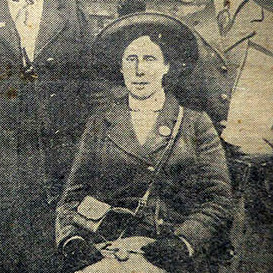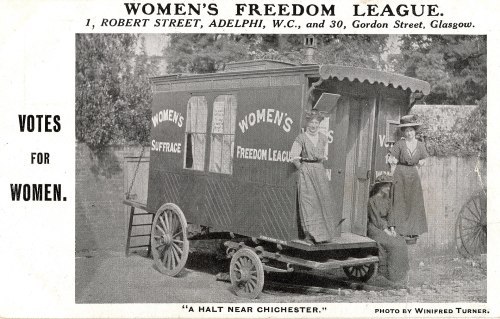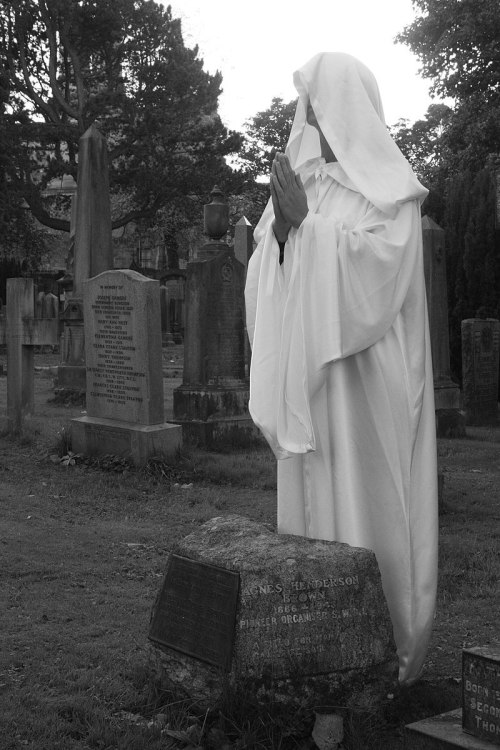The Scottish Suffragette Agnes Henderson Brown Was Born On April 12th 1866 In Edinburgh.



The Scottish Suffragette Agnes Henderson Brown was born on April 12th 1866 in Edinburgh.
Nannie Brown, as she later became known as was born at 125 Princes Street, which is slap bang opposite the Castle. The street in those days would have been mainly a residential one, as it was meant to be in the plans for the New Town, George Street was meant to be the main shopping are.
Their father was interested in social and political reform and the house became a centre of cultural activity. The Dad ran a number of fruit shops under the title of William Brown & Sons he trained his daughters, Agnes and Jessie, well and refused to submit to laws that he objected to, he was an activist for women’s rights. His opposition to taxes that differentiated between genders caused him to end up in Calton Gaol.
Agnes and her sister Jessie were among the first women to be seen on bicycles in Scotland. The safety bicycle was the direct ancestor of today’s machines. With a slight adaptation they attracted thousands of women to cycling and some historians point to the safety bicycle as the beginnings of suffrage, women’s rights and feminism.
They first became active in the (WFL) Women’s Freedom League around 1910. Agnes was one of 6 women who walked the whole length of the Edinburgh to London suffrage march in 1912. It took five weeks and involved walking around 15 miles a day and attending a suffrage rally each evening. The marchers were dressed in russet brown jackets, earning the six women the name (the) Brown Women.
Following Emily Davison’s death at the Derby in 1913 a deputation of Councillors, JPs ministers, solicitors and barristers from Scotland and the North of England tried to see Prime minister Asquith, He refused to see them so they formed the ‘Northern Men’s Federation for Women’s Suffrage’ Agnes became secretary of the Edinburgh Branch.
Unlike the (WSPU) The Women’s Social and Political Union , the WFL welcomed male support in the struggle. They continued campaigning throughout the war years.
After the war Agnes was involved in setting up the (SWRI) Scottish Women’s Rural Institute and was an organiser from 1917-22. She was also a member of the Edinburgh Women’s Citizens Association.
Nannie Brown wrote articles and plays and participated in societies such as the Edinburgh Dickens Fellowship, where she learned women to type and ride a bicycle.
She continued to walk. Not content with the Brown Women walk she repeated a similar walk but this time she set off from John O Groats. As she travelled to London she reported on her journey in the Weekly Scotsman.
Agnes Brown died on 1st December 1943 and was buried with her parents in Dean Cemetery Edinburgh. She was noted in the Scottish Saltire Society who published her obituary as an Outstanding Women of Scotland Community in 2014
More Posts from Maromrom and Others
https://www.instagram.com/p/DJUEymXO_xGzLVFHEadG-mLZIP5leddkQP0Zh80/?igsh=eHdjbWNyMW03MHNz

lo.reads
A good book,a nice music,a hot beverage is all you need to survive the hard times in your life


Miracle
Not the one who takes up his bed and walks
But the ones who have known him all along
And carry him in —
Their shoulders numb, the ache and stoop deeplocked
In their backs, the stretcher handles
Slippery with sweat. And no let up
Until he’s strapped on tight, made tiltable
and raised to the tiled roof, then lowered for healing.
Be mindful of them as they stand and wait
For the burn of the paid out ropes to cool,
Their slight lightheadedness and incredulity
To pass, those who had known him all along.

in light of recent events, decided to redraw a still relevant old drawing of mine

Es un libro maravilloso!!!!!!
Me, scanning my bookshelf: “Hmm, what am I going to read next?”
New book I just bought:

Me:

Unread book that has been sitting on my shelf for years:


I love my family


#pleasure#travel#scotland#life
-
 josedavis601 liked this · 7 months ago
josedavis601 liked this · 7 months ago -
 summerwages liked this · 7 months ago
summerwages liked this · 7 months ago -
 imaginationmortimaginez liked this · 1 year ago
imaginationmortimaginez liked this · 1 year ago -
 joseacamilotejadablog57 liked this · 1 year ago
joseacamilotejadablog57 liked this · 1 year ago -
 obniloco liked this · 1 year ago
obniloco liked this · 1 year ago -
 hotloveonlegsfan liked this · 2 years ago
hotloveonlegsfan liked this · 2 years ago -
 winston18 liked this · 2 years ago
winston18 liked this · 2 years ago -
 zlukaszemprzezswiat liked this · 2 years ago
zlukaszemprzezswiat liked this · 2 years ago -
 iamgrumpy57 liked this · 2 years ago
iamgrumpy57 liked this · 2 years ago -
 thekingishere24724 liked this · 2 years ago
thekingishere24724 liked this · 2 years ago -
 country-bumpkin-69 liked this · 2 years ago
country-bumpkin-69 liked this · 2 years ago -
 superlucyjin liked this · 2 years ago
superlucyjin liked this · 2 years ago -
 therealfallofeden reblogged this · 2 years ago
therealfallofeden reblogged this · 2 years ago -
 therealfallofeden liked this · 2 years ago
therealfallofeden liked this · 2 years ago -
 yesfrancispthings liked this · 2 years ago
yesfrancispthings liked this · 2 years ago -
 sbdunksblog liked this · 2 years ago
sbdunksblog liked this · 2 years ago -
 mrempathy61 liked this · 2 years ago
mrempathy61 liked this · 2 years ago -
 caldineens reblogged this · 2 years ago
caldineens reblogged this · 2 years ago -
 caldineens liked this · 2 years ago
caldineens liked this · 2 years ago -
 steviedegrae liked this · 2 years ago
steviedegrae liked this · 2 years ago -
 doricloon reblogged this · 2 years ago
doricloon reblogged this · 2 years ago -
 maromrom reblogged this · 2 years ago
maromrom reblogged this · 2 years ago -
 maromrom liked this · 2 years ago
maromrom liked this · 2 years ago -
 all-too-human-storiesxd reblogged this · 2 years ago
all-too-human-storiesxd reblogged this · 2 years ago -
 tipi1 liked this · 2 years ago
tipi1 liked this · 2 years ago -
 youllbehappyandwholesomeagain liked this · 2 years ago
youllbehappyandwholesomeagain liked this · 2 years ago -
 lemotjuste-tx reblogged this · 2 years ago
lemotjuste-tx reblogged this · 2 years ago -
 paleotool liked this · 2 years ago
paleotool liked this · 2 years ago -
 crispyflapdeputyflower liked this · 2 years ago
crispyflapdeputyflower liked this · 2 years ago -
 dcs6460 liked this · 2 years ago
dcs6460 liked this · 2 years ago -
 underthewingsofthblackeagle reblogged this · 2 years ago
underthewingsofthblackeagle reblogged this · 2 years ago -
 underthewingsofthblackeagle liked this · 2 years ago
underthewingsofthblackeagle liked this · 2 years ago -
 elizabethgoudge liked this · 2 years ago
elizabethgoudge liked this · 2 years ago -
 scotlandscalling reblogged this · 2 years ago
scotlandscalling reblogged this · 2 years ago -
 scotlandscalling liked this · 2 years ago
scotlandscalling liked this · 2 years ago -
 scotianostra reblogged this · 2 years ago
scotianostra reblogged this · 2 years ago
